In Dublin by Design, a new book exploring the origins and future of Ireland’s capital city, an image sprawls across two pages.
The Aviva Stadium glassily inclines on the right, dwarfing rows of suburban-style housing. In the forefront, the former gasometer, now apartments, roundly sits, while behind, seemingly incongruously in such prime real estate, is a large ESB yard. Separately lie a grass-centred greyhound track and tennis and sports courts. Beyond is the line of Sandymount Strand.
Apart from the housing grids, it all looks a bit haphazard. But think about it further and perhaps the eclectic collection is not so haphazard after all, whatever your personal feelings about dog racing.
Devotees of that 1990s phenomenon, Sim City, will remember the rich recipe of infrastructure, services, transport networks, accommodation, commerce, culture and leisure facilities a thriving city needs – and that’s if you’re starting from scratch. In reality, the stew is even thicker.
With some notable exceptions (Oscar Niemeyer’s Brasília, for example), cities don’t just happen. Geography tends to start things off by suggesting a defendable spot at a harbour or further up a navigable river. History steps in with settlement and plays of power, as mere survival segues into permanent sites for ceremony, procession and celebration. Then there’s commerce, manufacturing. Conflicts come and go, eras are almost erased then uncovered, and little by little you have that planned but also often opportunistic and frequently chaotic body we know as a city.
Published ahead of the 100th anniversary of the foundation of the Irish State (due in 2022) and edited by Noel Brady and Dr Sandra O'Connell, Dublin by Design unfolds a fascinating story. Dublin City archivist Dr Mary Clark begins in 841, with the decision of Norsemen to found a settlement where the Liffey and Poddle met, and centre on the Thingmote (literally "assembly mound"). Some also believe there was a Christian settlement there before the Norse turned up, but you've got to start your story somewhere.
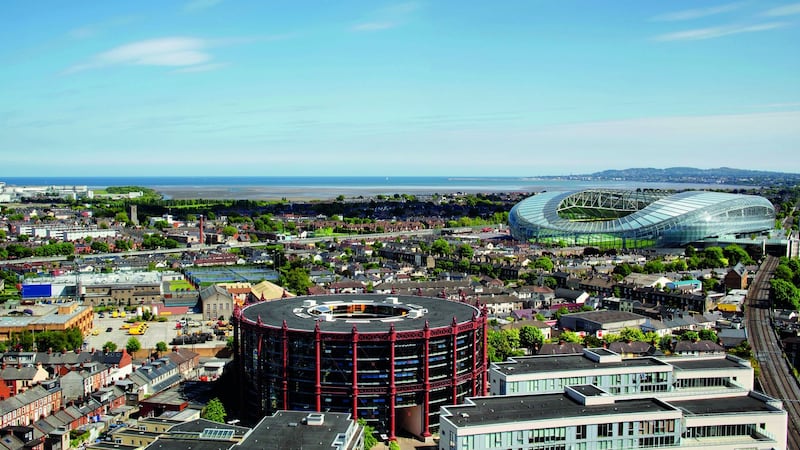
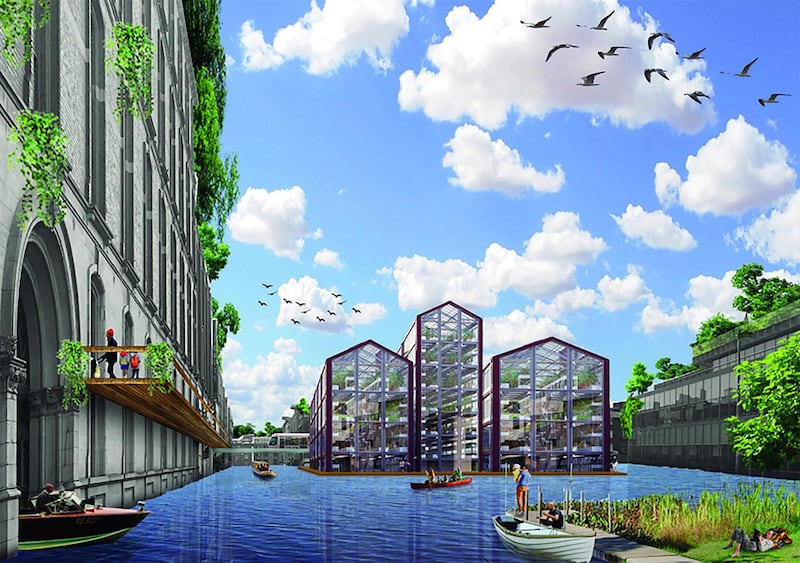
A little more than 300 years later came Henry II, who sent the Norse to Oxmantown and the Irish to Irishtown. He also designated Dublin as a city. The original Thingmote is gone, as is the pub on Suffolk Street that, for a while, brought its name back into the minds of Dubliners, even if they weren’t aware they were continuing a millennium-old tradition when they chose it for a meeting place.
Clark's chapter is a fascinating gallop through the laws contained in the original city charter (1192) and the later emergence of some of the principal bridges and buildings that still anchor the map of Dublin: Essex Bridge, now Grattan Bridge, City Hall, the Custom House, the City Assembly House.
"City governance has been central to city architecture," says co-editor O'Connell, noting examples of the Wide Streets Commission (1757) and later the appointment of Herbert Simms, who, as housing architect to Dublin Corporation, was responsible for the construction of 17,000 flats and houses in the 1930s.
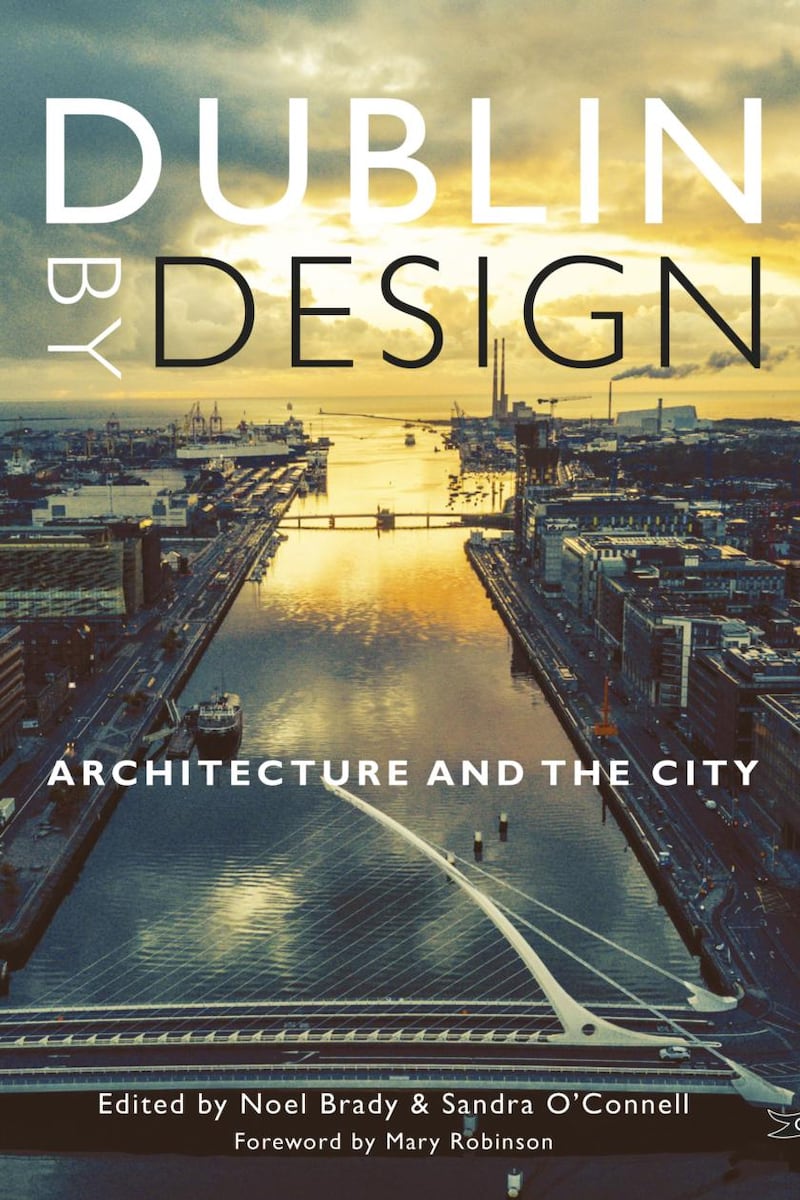
And while we may frequently feel in the grip of sweeping and irrevocable change, co-editor Brady says that one of the surprises of the book is to discover how “the scale and character of Dublin has survived relatively unchanged for so long”, citing the persistence of the domestic style of two-storey housing, which he sees as limiting mobility in the capital.
But that city pattern hasn’t been unthreatened. In an eloquent and passionate chapter, Condemnation, Damnation & Salvation, Frank McDonald revisits ground he covered in his brilliant book The Destruction of Dublin (1985), lamenting the loss of the original patterns of High Street and Cornmarket, the Theatre Royal building and Lower Fitzwilliam Street, while also searching for better future solutions.
The Destruction of Dublin, McDonald says, was a “muckraking book [which] became an instant bestseller but sadly couldn’t be reprinted due to threats of libel action from some of those it named”. (If you are fascinated to find out more and have about €100 to spare, the internet can be a marvellous source of out-of-print books.)
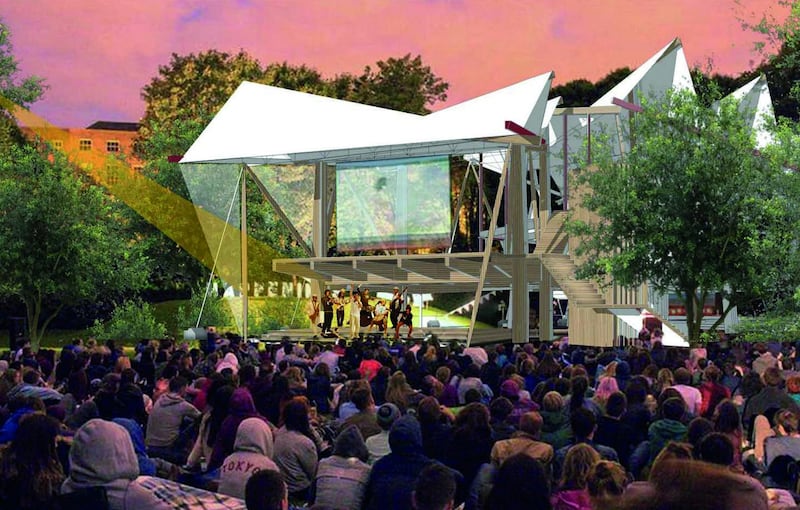
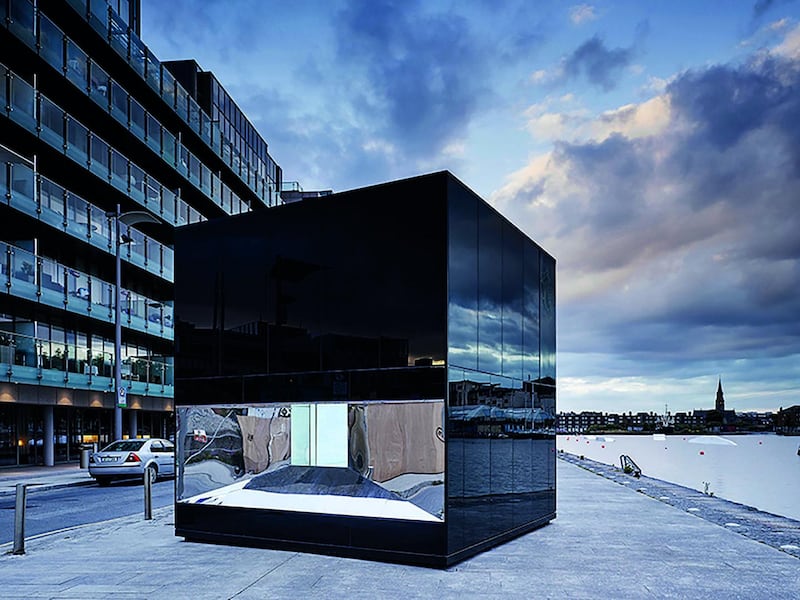
Picking up the idea of lost treasures, Brady echoes the theme, also noting the Theatre Royal – although, as an aside, anyone shopping in what is now Marks & Spencer on Grafton Street can still ascend its marble staircase, which ended up there. “There have also been lost opportunities,” Brady says, “such as the incomplete work of the wide street commissioners and many contemporary plans that have evaporated.”
Evaporated plans aren’t just recent ones either. In Brian Ward’s chapter, Neo-Georgian Dublin, we discover a 1922 plan by the Greater Dublin Reconstruction Movement: “An extended Royal Hospital was to become the parliament and government offices; the Four Courts a municipal gallery; Dublin Castle the new Courts of Justice; the GPO the new City Hall; and the Customs House the new GPO. These monuments were to be imagined organised along a pre-existing ‘national highway’, stretching from Kilmainham to O’Connell Street.”
The book provides much food for thought about the huge potential of Dublin, and I don’t mean simply for generating capital. An image of one of the Guinness barges plying the Liffey in 1961 calls to mind the currently untapped green transportation potential of the canals. A model of a pedestrianised entrance to the Phoenix Park by Denis Byrne Architects makes you realise how magnificent such a thing could be.
An image of Sam Stephenson’s design model for theCentral Bank on Dame Street (1974), however, taken in light of the recent decision to let the ground floor to Krispy Kreme Doughnuts, has the opposite effect, causing me to lament the short-termist commercial decisions that blight and will continue to blight the city.
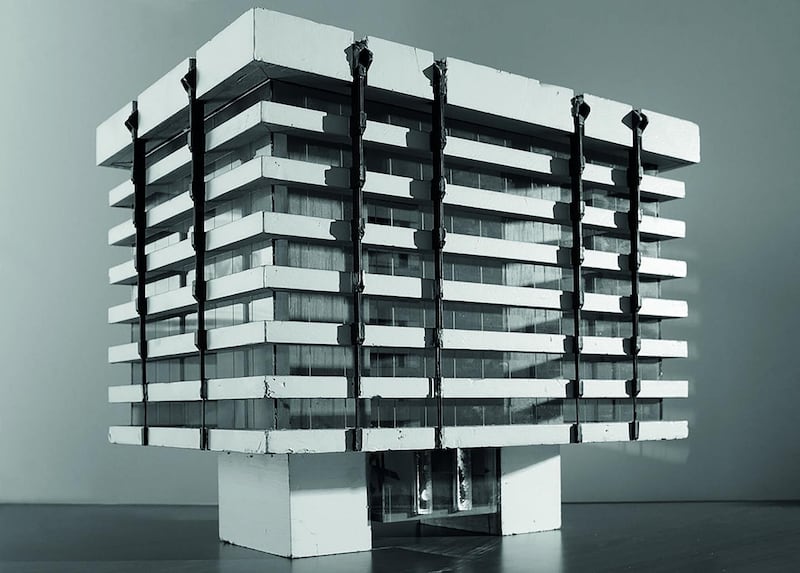
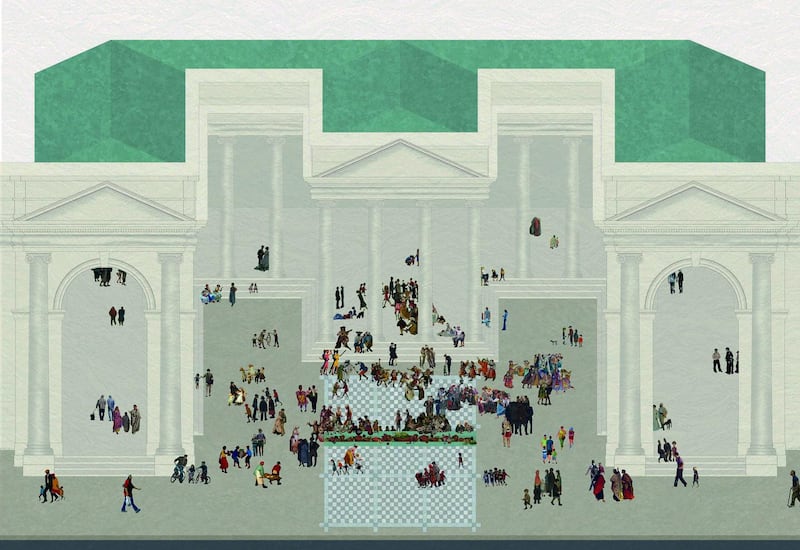
Overall, however, Dublin by Design takes a positive tone, focusing on understanding the past as a route to making better choices in the future. And some of that lies in adapting the buildings we have. In his chapter The Healthy City, Paul de Freine notes the Royal Hospital Kilmainham, now the Irish Museum of Modern Art, and Dr Steevens's Hospital, now the headquarters of the Health Service Executive, as examples of this.
While one could argue that the configuration of the museum, based as it is on that warren of small rooms, isn’t always ideal for displays of contemporary art (even though it occasionally triumphs), adaptation has to be a watchword for the future.
“Irish architects have a strong track record in the adaptation of buildings, which is also a positive climate change action,” says O’Connell, adding that “we need to see more of this work in Dublin, particularly when it comes to decisions about our more recent building stock”.
As Brady says, architects have a key role to play in this: “Every building must now be considered an embodied carbon asset that could be reused or rehabilitated, so even the most unloved may find redemption through reconfiguration and deep retrofit. Demolishing will no longer be the default methodology for renewing the urban environment.”
An image of de Siún Scullion’s 5Cube pavilion on Hanover Quay is a timely reminder of the country’s energy issues. 5Cube is a semi-permanent pavilion, representing the volume of oil consumed every five minutes in Ireland. In 2016 it won an award from the Royal Institute of the Architects of Ireland.
Meticulously and lavishly illustrated, Dublin by Design will be pored over by fans of architecture and those passionate about planning. But it's not just a tome for nerds (although they will probably lament the lack of an index). Further chapters take on more of Dublin's histories, through the Georgians and Victorians and beyond, there are stories of the Liffey and of Phoenix Park. The book also explores topics from transport to community, green spaces to culture, housing to health. Contributors include Shane O'Toole, Ciarán Cuffe, Éanna Ní Lamhna, Gráinne Shaffrey, Ellen Rowley, Shelley McNamara, Yvonne Farrell and more.
Cumulatively, these create a compelling sense of the shape of where we’re at but, unless we’re exceptionally unfortunate, history doesn’t end at the present day. As gathering places, places of commerce and community, and, crucially, as places where new groups may come, meet and form new communities, cities are in constant evolution.
“Problems regarding access, space, environment and inclusivity have plagued cities from their inception,” says Brady, “but they are outweighed by the benefits.”
A final section on next-generation architecture, by architecture students at Technological University (TU) Dublin and University College Dublin, gives some glimpses into possible futures. These include floating pavilions in a Venetian-style submerged city from a TU group; a(nother) new look at College Green by Emma Carroll; a new building on Merrion Square, called Constructive Assembly, imagined for the Citizens’ Assembly by Eoghan Smith; and a plan for a biosanctuary in Phoenix Park by TU students. These are fascinating, although the section is much too brief.
In the book, Yvonne Farrell from Grafton Architects, describes the city as “a kind of an instrument of living”. “This instrument,” says O’Connell, “needs to be retuned and recalibrated by each generation to continue to build an architectural heritage for future generations. It would be interesting to see what buildings and topics a book about Dublin will cover in 100 years to come.”
There is plenty of food for thought here.
Dublin by Design, edited by Dr Sandra O’Connell and Noel J Brady, is published by the Royal Institute of the Architects of Ireland and the O’Brien Press, €29.99












